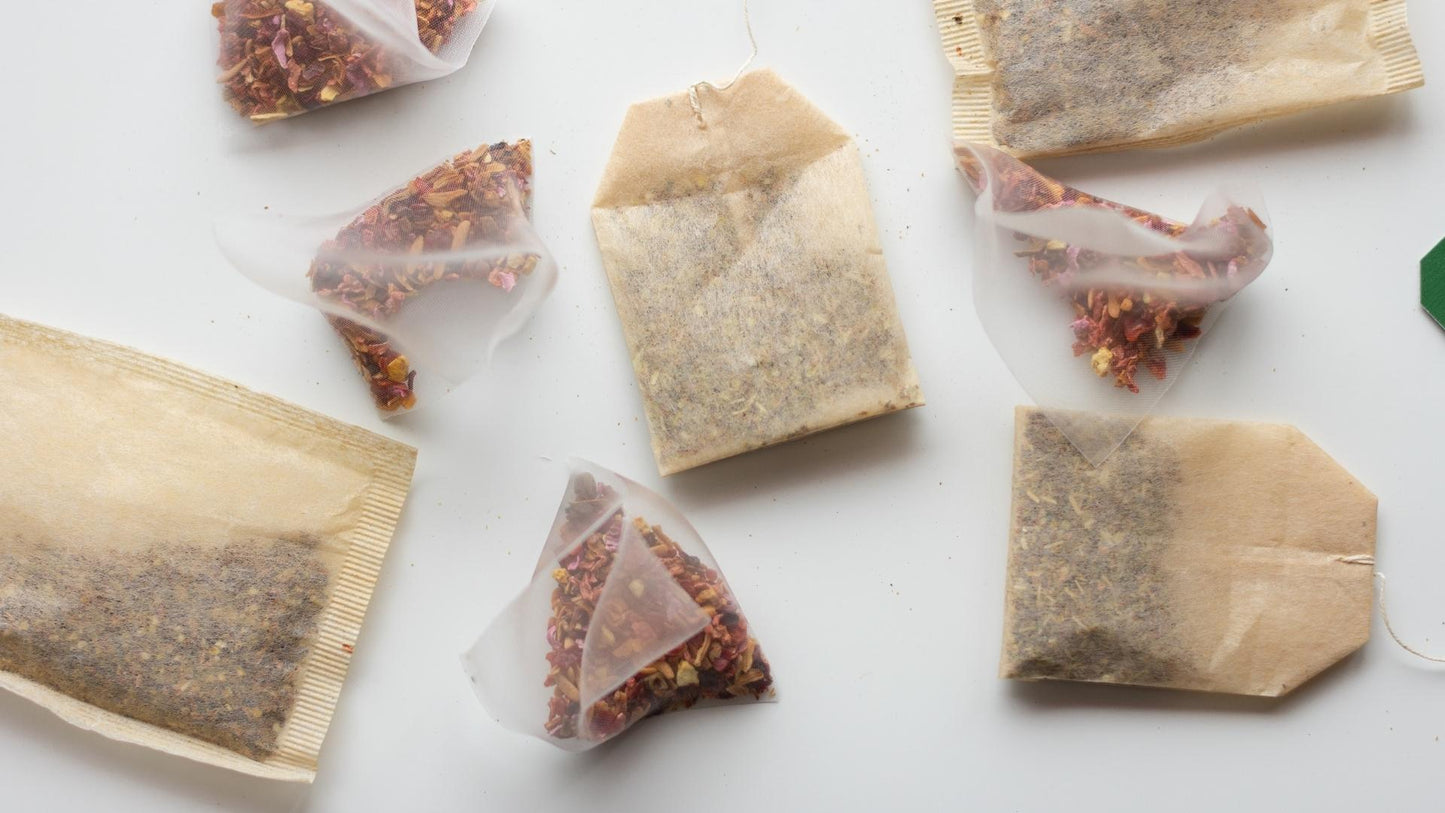Offer
Provide additional details about the offer you're running.
This store requires javascript to be enabled for some features to work correctly.
Provide additional details about the offer you're running.
Provide additional details about the offer you're running.

Although it’s not common knowledge, the majority of conventional tea bags are composed of at least 25% microplastics.
While tea is widely known to be a health beverage, you're going to want to consider this ugly truth.
According to the American Chemical Society’s Journal of Environmental Science and Technology, steeping a single plastic tea bag at brewing temperature can release over 11 billion harmful microplastics into your favorite tea drink.
What’s more, with billions of individual cups of tea brewed every year, that adds up to a lot of additional plastic in our environment.
Microplastic isn’t only hidden in your tea bags and making it unsafe. Polycarbonate plastics are the most common form of packaging in our food industry.
Many of these clear plastics contain a toxin called BPA. Studies have shown that 93% of the population has at least trace amounts of BPA in their system.
BPA acts like an artificial source of estrogen and affect hormones that control the development and growth of the brain and reproductive systems.
When heat is applied to containers that have BPA, this harmful plastic will then get released into your drink through a process called "leaching."
The BPA lined packaging is leaching plastics into our food and water that we consume.
Infants and children are especially at a higher risk of the harmful side affects of BPA because of baby bottles and baby formula.
At least 14 million tons of plastic end up in the ocean every year and this makes up 80% of all marine debris.
Plastic does not decompose like other substances, it just breaks into tiny pieces called microplastics.
They are only about the size of a sesame seed.
These small particles of plastic end up in the water supply and can become a serious threat to aquatic life.
And the hard truth is that fish ingest 12,000 - 24,000 tons of plastic every year.
This includes a large portion of the fish that makes it to market for human consumption every day.
It’s not just billions of microplastics in your tea. It's in the seafood supply too.
The best way to avoid exposure to harmful micro plastics in your tea is to choose loose leaf varieties. You can also make sure to buy tea bags that do not contain plastic.
Matcha tea makes an excellent alternative for tea that does not contain plastic. It's not steeped. You drink the whole leaf, dissolved in water.
So with matcha, no plastic tea bags are required.
In addition, with billions of plastic water bottles floating around the world’s oceans, you can choose to take your favorite reusable bottle with you when leaving your house.
Just make sure it’s BPA free.
And remember, glass is always BPA free.
An Aluminum bottle can be a great option as well. But make sure you check the label on it to make sure it doesn’t contain a BPA lining that can leach into your beverage.
What do you think?
Ultimately, it's about how all of this adds up over time.
Small actions now lead to big changes later for your body and the environment.
Overall, it's about lowering our toxic load from all sources.
We believe it's worth it.